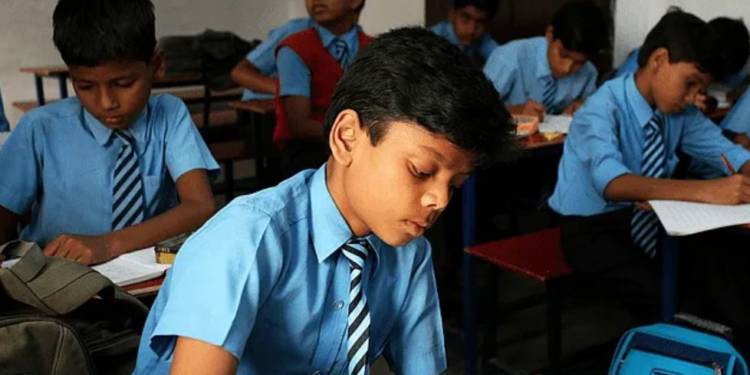After 70 years of independence from the British, this is the first attempt made by any government to end the psychological slavery imposed on us with British education. The Indian education system, which developed under the British Raj and later continued by Congress, was aimed at creating non-questioning and hard-working executives who could assist the British officials to run the government in the country.
Entrenched in Victorian values of rigidity, it created a class system based on Science, Commerce, and Arts stream. The Indian universities and their regulators like the University Grants Commission (UGC) were modeled after British universities, like the University of London and now-defunct University Grants Commission (United Kingdom).
Even after Independence, India continued with the British model of education despite the New Education Policies which came in 1968 and 1986; thanks to British educated ruling class. Even Britain got rid of its old education system with the closing of UGC (United Kingdom) in 1989, but India continues with a legacy to date.
However, the National Education Policy-2020 addressed most of these issues to a large extent. In the elitist British model of education, pre-schooling was available to only those in elite private schools, but with NEP, every student would get free education between 3-18 years and pre-schooling (3-6 years) is also compulsory.
The NEP-2020 also ends the rigidity imposed through annual exams criteria, which was mainly imposed to fail as many students as British can, and leave no scope of learning from mistakes. The new policy also brings Continuous and Comprehensive Evaluation- which means students will be evaluated throughout the year and on various metrics and not just on their academic performance.
With the NEP-2020, the importance of one time annual exams would reduce widely and even in those annual exams students will be given multiple chances. The students will be taught skills right from class 6 so that they do not enter the job market as a burden on the company.
The compartmentalization of Science, Arts and Commerce will end; the students will be allowed to choose any combination of subjects. They will be given a variety of subjects to opt from and Cumulative grades will be prepared based on their performance in these subjects. The rigid division between curricular activities and extra-curricular activities will also end and performance in sports, craft, and event management will be also considered as the part of academia.
The NEP-2020 gives a 180-degree shift in terms of flexibility. ‘Rigidity’ was the keyword in the old education system as it treated students as human resources; while ‘flexibility’ is the keyword in the NEP-2020 as it envisages students as learners and gives them enough scope to make a lot of mistakes and learn from them.
In higher education, the three-year degree course will end and Four Year program will be implemented with multiple entry and exit options. The students will get a certificate if he/she chooses to exit in one year, diploma on studying two years after 12th, a degree for studying 3 years, and a degree with honours for completing four years- which means that the student has done research as well. Clearly the student can exit at any moment and complete the education later as all his/her credits will be kept in credit bank.
The masters’ degree will automatically have less rage, as four-year graduation degree will make the students eligible for entry in doctorate; M. Phil will be junked altogether.
The NEP-2020 visualizes India as a future superpower and has been prepared with keeping ongoing digital revolution in mind. It argues to bridge the digital divide as well as to take a great leap forward in development with the help of digital technology.
With the emphasis on skills, and not degree, the NEP-2020 takes India back to its roots, where science was taught by conducting actual experiments and the students who learnt shastra (weapons) were allowed to learn Shastras (texts) too. With NEP-2020, the British education system which was imposed to throw Indians into intellectual slavery has also been done away with.
In the ancient education system, there was no compartmentalization and every student was allowed to explore his/her capabilities and choose the profession accordingly. By going back to its roots in education, India might again become Vishwa-guru that it used to be.


































